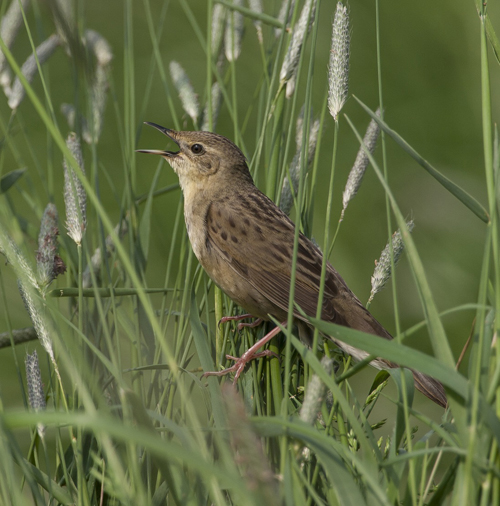Grasshopper warbler
- sings like a grasshopper
Can you hear the whirring sound of crickets a warm summer evening on the banks of the river Kongeå? Listen again. Maybe it's the grasshopper warbler that you can hear.
The grasshopper warbler has a monotonous humming song that sounds like cicadas or grasshoppers singing. It is very persistant and can go on for hours.
Active at night
This little bird is most active at night and it is very difficult to spot. It often lives in ditches and reedbeds and by lakes, watercourses and marshes, where its brownish colour blends in with the surroundings.
The grasshopper warbler lives off insects, which it finds when it is scratching around in the scrub like a mouse. You can recognize it by its eagerly bobbing tail and the striped plumage.
Most on Amager
The first safe breeding record of grasshopper warblers was made in 1952 in Tinglev Mose in South Jutland. Since then it has spread upwards throughout Jutland and is now most common in East Jutland.
On Sealand, the grasshopper warbler probably immigrated from Sweden. Denmark's densest population of grasshopper warblers exists today on Amager.
Facts about grasshopper warblers
Height 13 cm
Olive-brown on the upper side and white-yellow on the underside. The back, wings and pason's nose have dark stripes and spots on the brown base colour.
Commonly bred bird in most of Denmark.


